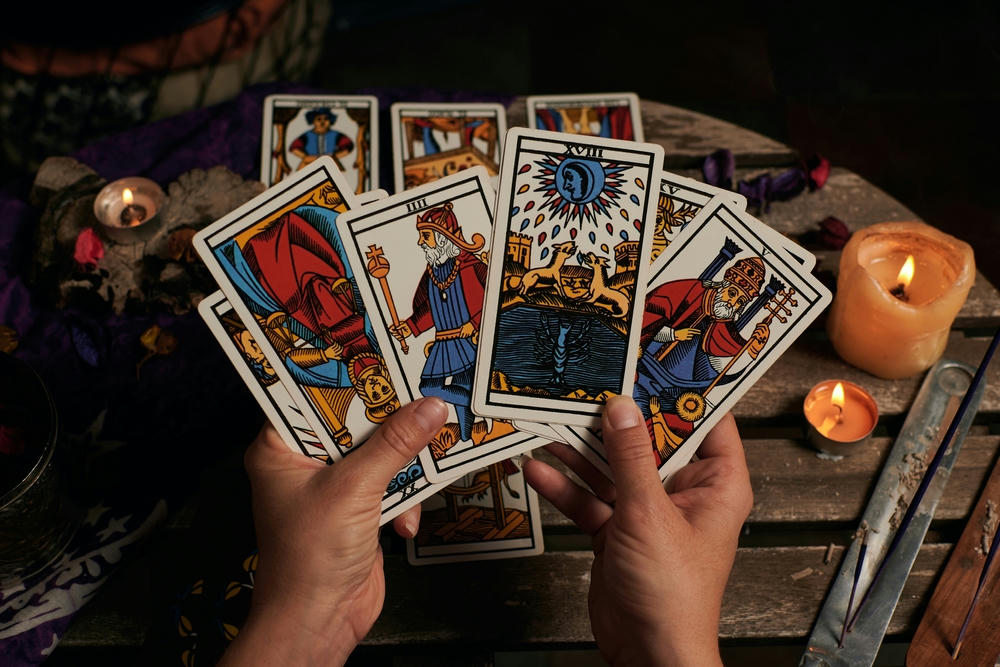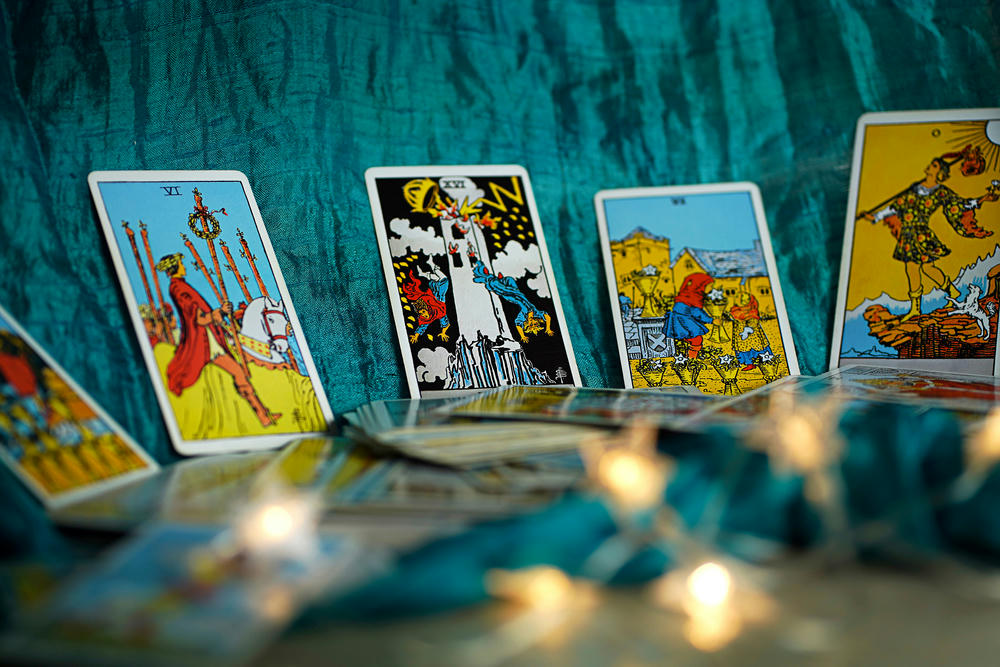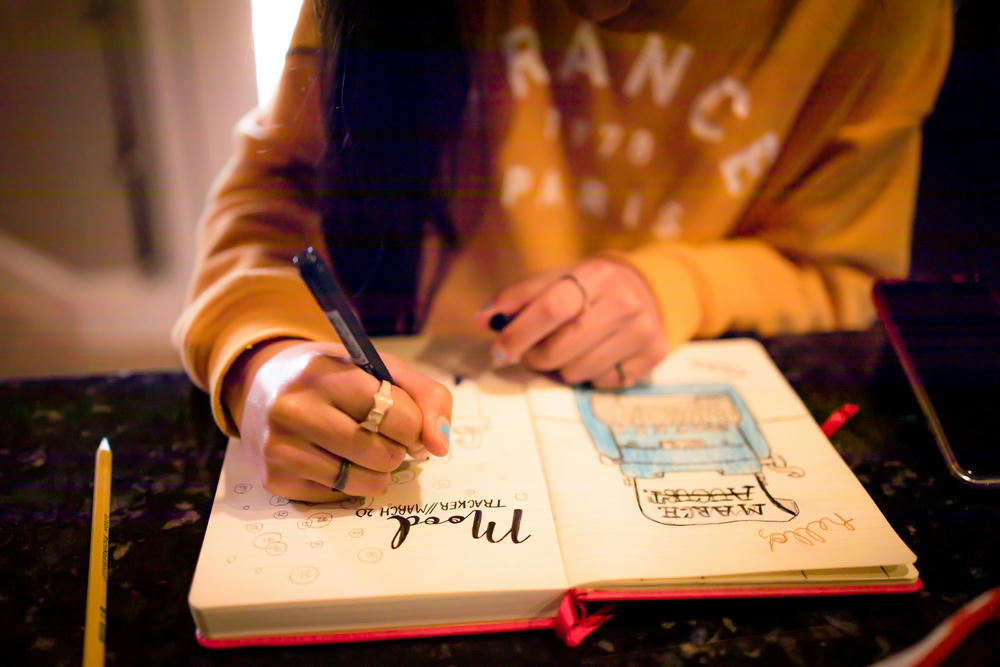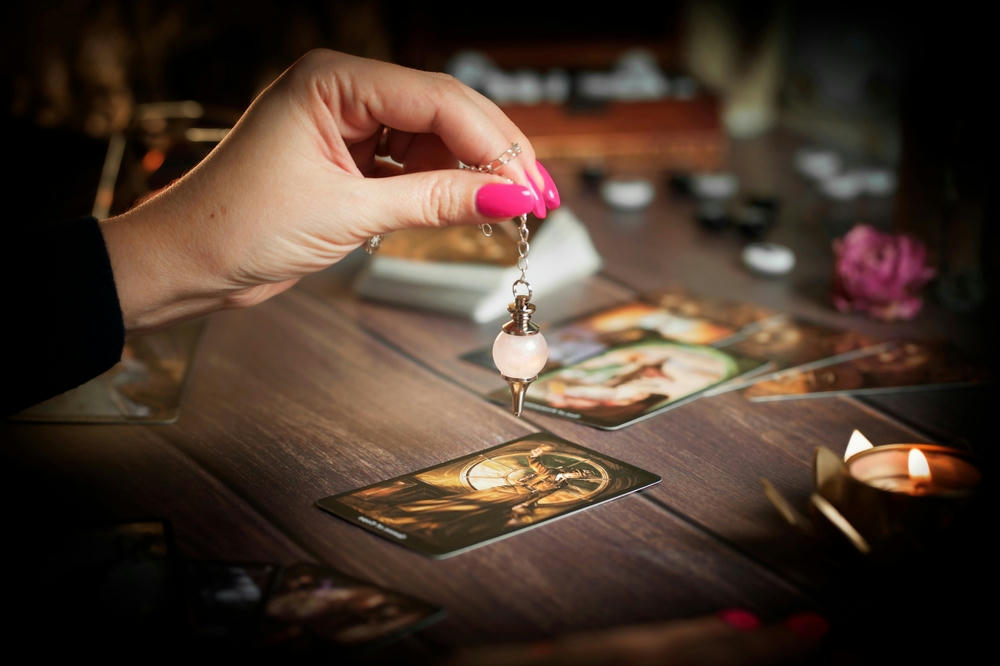
What Are Tarot Cards?
Tarot reading is a practice that spans various cultures and historical periods. But in today's psychic world, tarot blends art and insight, offering people a way to understand life patterns and discover more about themselves.
Tarot cards, an ancient deck of 78 cards, each adorned with unique imagery and symbolism. This deck of cards has transformed from basic playing cards into powerful tools for spiritual insight, self-reflection, and divination.
Join us as we explore the simple yet profound world of what tarot cards are and how they can lead us to enlightenment.

Exploring the different types of tarot cards
Tarot cards are typically divided into two main groups: the Major Arcana and the Minor Arcana.
Major Arcana
The Major Arcana group comprises 22 cards, including The Lovers and The Empress, with each card representing a significant life event or archetype. The cards portray powerful and transformative experiences.
Major Arcana (22 cards):
- The Fool
- The Magician
- The High Priestess
- The Empress
- The Emperor
- The Hierophant
- The Lovers
- The Chariot
- Strength
- The Hermit
- Wheel of Fortune
- Justice
- The Hanged Man
- Death
- Temperance
- The Devil
- The Tower
- The Star
- The Moon
- The Sun
- Judgment
- The World
Minor Arcana
The Minor Arcana is a group of 56 cards and is divided into four suits, similar to a standard deck of cards. In Tarot, these suits are typically Cups, Pentacles (or Coins), Swords, and Wands (or Rods).
Within each suit are cards numbered from Ace to 10, along with four court cards: Page, Knight, Queen, and King. The Minor Arcana is centred on everyday aspects of life and personal experiences.
Cups (14 cards):
- Ace of Cups
- Two of Cups
- Three of Cups
- Four of Cups
- Five of Cups
- Six of Cups
- Seven of Cups
- Eight of Cups
- Nine of Cups
- Ten of Cups
- Page of Cups
- Knight of Cups
- Queen of Cups
- King of Cups
Pentacles/Coins (14 cards):
- Ace of Pentacles
- Two of Pentacles
- Three of Pentacles
- Four of Pentacles
- Five of Pentacles
- Six of Pentacles
- Seven of Pentacles
- Eight of Pentacles
- Nine of Pentacles
- Ten of Pentacles
- Page of Pentacles
- Knight of Pentacles
- Queen of Pentacles
- King of Pentacles
Swords (14 cards):
- Ace of Swords
- Two of Swords
- Three of Swords
- Four of Swords
- Five of Swords
- Six of Swords
- Seven of Swords
- Eight of Swords
- Nine of Swords
- Ten of Swords
- Page of Swords
- Knight of Swords
- Queen of Swords
- King of Swords
Wands/Rods (14 cards):
- Ace of Wands
- Two of Wands
- Three of Wands
- Four of Wands
- Five of Wands
- Six of Wands
- Seven of Wands
- Eight of Wands
- Nine of Wands
- Ten of Wands
- Page of Wands
- Knight of Wands
- Queen of Wands
- King of Wands
Learn more about cartomancy and card reading on PsychicWorld.
How does a tarot card reading work?
A tarot card reading involves drawing and interpreting cards from a deck to gain insights into a person's life. While you don’t have to have any innate abilities to read tarot cards, many psychics offer this service. The process generally follows these three steps:
-
Card shuffle:
Each tarot card contains intentional symbolic images, including characters, objects, and scenes, each carrying specific meanings. These symbols are designed to connect with the subconscious mind, triggering intuitive insights.
When seeking a reading, the person (querent) either shuffles the deck and selects cards or lets the reader do it. -
Card spread:
Cards are selected and organised into specific patterns or arrangements, each carrying its significance and intention. The idea is that the act of picking these cards can impact the subconscious, enabling it to direct the choice of cards and unveil insights that are pertinent to the seeker's question.
The specific placement of cards within a spread enhances the overall interpretation, offering a better understanding of the reading. -
Interpretation:
Tarot cards serve as a common tool for divination, allowing readers to interpret the cards for insights into the past, present, or future. This practice heavily depends on the reader's intuition and their connection with the symbols on the cards.
Tarot readers utilise their intuition to interpret the cards, taking into account the relationships between cards, their positions in the spread, and their symbolic meanings. Additionally, the consideration of reversals* (cards appearing upside down) adds nuance to the interpretation.
*In tarot reading, reversals happen when cards show up upside down. This adds a twist to the meaning, like looking at the card from a different angle. For example, a normally positive card might take on a more challenging or subtle aspect when it appears reversed.

What can tarot cards be used for?
There are numerous ways to use tarot cards, and mastering tarot card reading can serve various purposes in the mystical realm, such as:
- Gaining insights into your life
- Guiding specific situations
- Assisting in spiritual and personal growth
A typical tarot card reading involves drawing and interpreting cards to answer questions or provide insight into a person's life. However, it's important to know that interpretations can vary.
While some individuals use tarot for dedicated spiritual or inner exploration, others engage in it purely for fun and entertainment. This diversity is understandable given that tarot's rich history is intertwined not only with various cultural and mystical traditions but also with pop culture.
Other ways tarot cards can guide
To understand tarot cards better, let's look at how people use these ancient cards and what else they gain from practising with them.
-
Psychological insight
Many practitioners see tarot as a psychological tool for individuals to delve into their thoughts, feelings, and unconscious motivations. The cards act like a mirror, showing aspects of the person's inner world. -
Decision-making
Many use tarot cards as decision-making tools, seeking clarity in specific situations. The cards offer different viewpoints and reveal potential outcomes, helping individuals make well-informed choices. For instance, someone might consult tarot cards when deciding between job opportunities.
Bringing focused questions, like questions about your career, sharpens the reading's focus and significantly boosts its value for you. No matter the decision you're considering, asking questions provides a clear purpose to the reading. -
Meditation and mindfulness
Certain individuals incorporate tarot cards into their meditation and mindfulness practices, using them as focal points. Using imagery and symbolism in meditation can induce relaxation, improve concentration, and heighten awareness, similar to the effects of aura cleansing practices.
Someone might choose a tarot card representing tranquillity as a visual anchor during their meditation session to promote a sense of calm and mindfulness. -
Creative inspiration
Tarot cards can serve as inspiration for creative pursuits. Writers, artists, and musicians often draw cards to spark ideas, overcome creative blocks, or explore fresh perspectives in their work.
For example, a writer might turn to tarot cards to generate plot twists or character developments, while an artist might use them to inspire new visual concepts for their artwork. -
Journaling
People often incorporate tarot cards into their journaling routines by drawing cards and using them as prompts for reflection. This involves exploring thoughts and emotions in a written format.
For example, someone might draw a card and then journal about the symbolism, personal associations, or insights they gather from that card, creating a more interactive and introspective journaling experience.
If you're drawn to spiritual practices that involve writing, you may find our automatic writing services intriguing.

-
Therapeutic exploration
Therapists sometimes use tarot cards as a therapeutic tool in counselling sessions. The symbolic nature of the cards can help guide discussions about personal challenges, emotions, and goals.
For instance, a therapist might ask a client to select a card that resonates with them and then explore how the imagery and symbolism connect with the client's experiences, building a deeper understanding of therapeutic insights.
Are there potential drawbacks or risks associated with using tarot cards?
While many people find value, inspiration, and guidance in tarot card readings, it's important to approach the practice with a balanced perspective. Let’s consider the following potential risks associated with tarot reading:
Subjectivity
Tarot readings are subjective. The meanings of cards can differ, and different readers may offer varied insights for the same cards. It's important to understand that interpretations aren't fixed and can be influenced.
For instance, one reader might interpret the Tower card as a symbol of sudden change and upheaval, while another may see it as a necessary transformation leading to growth.
Dependency
Excessive reliance on tarot readings for decision-making or reassurance poses a risk. Depending too much on external guidance may undermine one's trust in intuition and independence. This vulnerability is even higher for those facing challenges, potentially leading to interpretations that exacerbate stress or anxiety.
Remember that, while tarot can be a helpful tool, readings should not replace professional support when necessary.
Fear
Misinterpreting specific cards or receiving negative readings can potentially heighten anxiety or fear. Focus on the fact that tarot cards are a tool for exploration and not every reading should be seen as predictive or definitive.
For instance, someone drawing the Death card might initially worry about literal death. However, in tarot, this card often symbolises transformation or change rather than a demise. Recognising these nuances prevents unnecessary anxiety and ensures a more accurate understanding of the cards' intended meanings.
Superstition
People sometimes connect tarot cards with superstitions and misunderstandings about the occult, leading to unnecessary fear or discomfort. This is especially true for those with strong religious or cultural beliefs.
Certainly, some people may wonder if psychic readings are sinful, particularly due to the association of card reading with dark forces. Clearing up these misunderstandings promotes a more informed and open-minded view of tarot as a tool for self-reflection and guidance.
Misuse
Choosing an inexperienced or unqualified tarot reader may result in misleading or unhelpful readings. There are instances of individuals taking advantage of others' vulnerability by offering expensive or unnecessary services, falsely claiming to provide solutions or insights through tarot readings.
Be cautious and invest time in finding reliable psychics when seeking spiritual guidance. Choosing practitioners with certification and a good reputation, who understand and adhere to ethical considerations in their practice, is crucial.

Conclusion
As we explore the appeal of tarot cards, we find a versatile tool filled with rich symbolism. However, engaging with tarot requires an open mind and the willingness to interpret it personally—some see it spiritually, while others view it as a psychological or creative tool.
The flexibility of tarot allows individuals to customise its use according to their unique goals and beliefs. Essentially, the tarot acts as a mirror, reflecting the depths of our narratives and aspirations.
Now that you're clued up about tarot, why not experience one of our free weekly card readings today?
More predictions and horoscopes
Learn more about your love life, career and future and try another free horoscope on PsychicWorld.
All free horoscopes All year horoscopes Today's horoscope
Need expert help and a personal reading?
Chat with an online psychic expert and make 2023 your year!
*Image(s) used under license from Shutterstock.com and / or stock.adobe.com